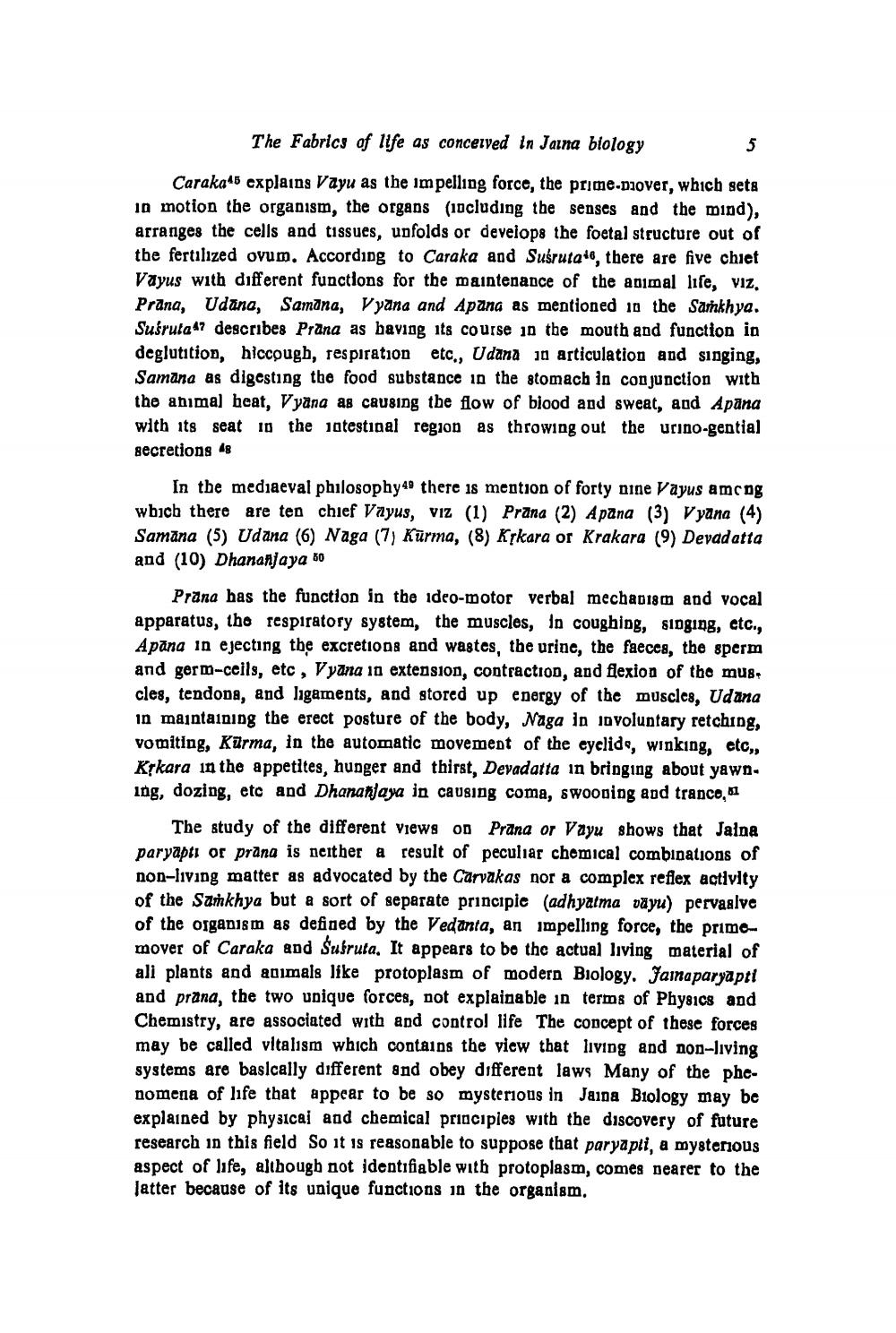________________
The Fabrics of life as conceived in Jaina biology
Caraka45 explains Vayu as the impelling force, the prime pover, which seta 10 motion the organism, the organs (including the senses and the mind), arranges the cells and tissues, unfolds or develops the foetal structure out of the fertilized ovum. According to Caraka and Susruta's, there are five chief Vayus with different functions for the maintenance of the animal life, viz. Prana, Udana, Samana, Vyana and Apana as mentioned in the Sankhya. Sufruta 47 describes Prana as baving its course in the mouth and function in deglutition, hiccough, respiration etc., Udana jo articulation and singing, Samana as digesting the food substance in the stomach in conjunction with the animal heat, Vyana as causing the flow of blood and sweat, and Apāna with its seat in the intestinal region as throwing out the urino-gential secretions 48
In the mediaeval philosophy there is mention of forty nine Vayus amcog wbich there are ten chief Vayus, viz (1) Prana (2) Apana (3) Vyana (4) Samāna (5) Udana (6) Naga (7) Kūrma, (8) Kękara or Krakara (9) Devadatta and (10) Dhananjaya 50
Prana bas the function in the ideo-motor verbal mechanism and vocal apparatus, the respiratory system, the muscles, In coughing, singing, etc., A pana in ejecting the excret1008 and wastes, the urine, the faecca, the sperm and germ-ceils, etc, Vyana 10 extension, contraction, and flexion of the mus. cles, tendons, and ligaments, and stored up energy of the muscles, Udana in maintaining the erect posture of the body, Naga in involuntary retching, vomiting, Kūrma, in the automatic movement of the eyelids, winking, etc,, Křkara in the appetites, hunger and thirst, Devadatta in bringing about yawn. ing, dozing, etc and Dhananjaya in causing coma, swooping and tranco, a
The study of the different views on Prana or Vayu shows that Jalna paryaptı or Prana is neither a result of peculiar chemical combinations of non-living matter as advocated by the Carvakas nor a complex reflex activity of the Sankhya but a sort of separate principie (adhyatma vāyu) pervaalve of the organism as defined by the Vedanta, an impelling force, the primemover of Caraka and Susruta, It appears to be the actual living material of ali plants and animals like protoplasm of modern Biology. Jama paryapti and prana, the two unique forces, not explainable in terms of Physics and Chemistry, are associated with and control life The concept of these forces may be called vitalism which contains the view that living and non-living systems are basically different and obey different laws Many of the phenomena of life that appear to be so mysterious in Jaina Biology may be explained by physical and chemical principies with the discovery of future research in this field So it is reasonable to suppose that paryapti, a mysterious aspect of life, although not identifiable with protoplasm, comes nearer to the latter because of its unique functions in the organism,




